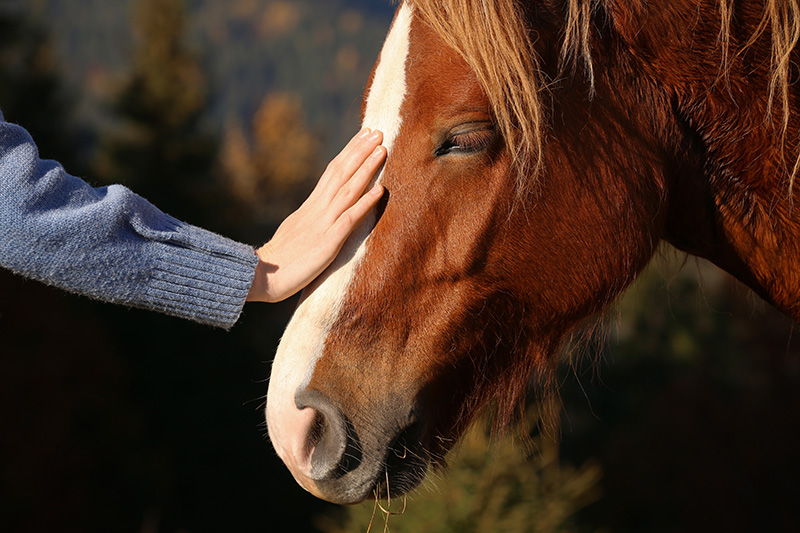Equine Therapy: A Pathway to Resilience and Recovery from PTSD
In an era characterized by heightened awareness around mental health, equine therapy has emerged as an innovative therapeutic modality for addressing post-traumatic stress disorder (PTSD). This compelling form of therapy harnesses the innate bond between humans and horses, providing a unique environment conducive to healing. By engaging with these sentient beings, clients can explore their emotional landscapes while cultivating trust, empathy, and resilience.
Understanding PTSD: The Silent Struggle
PTSD is a complex psychiatric condition that arises following exposure to traumatic events. The American Psychiatric Association defines it as characterized by intrusive thoughts, avoidance behaviors, negative alterations in mood and cognition, and heightened arousal. The clinical manifestations often severely interfere with an individual’s ability to function in daily life. Traditional treatments such as cognitive behavioral therapy and medication offer routes to healing, yet some individuals find that alternative therapies, including equine-assisted interventions, resonate with their unique healing journeys.
Therapeutic Principles of Equine-Assisted Therapy
The foundation of equine-assisted therapy lies in the therapeutic principles that animate this approach. Horses, as prey animals, possess a heightened sensitivity to human emotions and body language. This preternatural ability allows them to mirror the feelings of the individual engaged with them, offering a non-judgmental reflection of the client’s inner state. The following elements illustrate how equine therapy operates as a multifaceted therapeutic intervention.
Empathy and Connection
Building a genuine connection with a horse requires a profound level of trust and communication, both of which can be incredibly cathartic for individuals grappling with PTSD. Establishing rapport with a horse can enable clients to revisit and reprocess traumatic memories within a supportive framework, fostering emotional release. For instance, the act of grooming or leading a horse offers a tactile experience that can ground an individual, redirecting focus from internal turmoil to the present moment.
Mindfulness through Movement
Engaging with horses often necessitates a level of physical activity, whether it’s walking alongside them or performing specific movements during riding exercises. This interaction serves as a conduit for mindfulness, inviting individuals to attune their awareness to both their bodily sensations and emotional reactions. The rhythmic nature of equestrian activities can induce a meditative state, alleviating anxiety and promoting relaxation.
Nonverbal Communication: A Language of Its Own
In many instances, individuals with PTSD may struggle with verbal expression of their thoughts and feelings. Horses are adept at interpreting nonverbal cues, making them ideal partners in this therapeutic context. Clients can learn to decipher their own body language and emotional signals, thus enhancing their interpersonal communication skills. This recognition fosters a sense of agency, empowering individuals to cultivate healthier relational dynamics beyond the therapeutic setting.
Challenges and Risks: Navigating the Therapeutic Terrain
While the journey through equine therapy may be enlightening, it is not devoid of challenges. Interacting with large animals necessitates caution and respect, as the power dynamics inherent in such environments can evoke anxiety or trigger traumatic responses in some participants. Therefore, it is critical that sessions be guided by trained professionals with experience in both psychotherapy and equestrian practice. These practitioners can tailor the therapeutic approach to the unique needs and circumstances of each client, ensuring a secure and supportive environment.
Resilience Through Bonding: The Human-Horse Relationship
At the heart of equine therapy is the development of a symbiotic bond between human and horse, which serves as a microcosm of broader relational dynamics. The reciprocal nature of this relationship can empower clients to experience growth in areas such as self-efficacy and emotional regulation. Progress in these domains can transcend the confines of the therapy space, positively influencing various aspects of an individual’s life.
Research and Evidence: What the Data Says
The increasing recognition of equine therapy as a valid intervention for PTSD is supported by a growing body of research. A series of studies reflect the positive impact of equine-assisted activities on individuals struggling with trauma. For instance, research has shown significant reductions in PTSD symptoms, including anxiety and depression, following participation in structured equine programs. These findings underscore the effectiveness of this mode of therapy and prompt exciting discussions about expanding access and integrating such modalities into traditional treatment frameworks.
Expansion into Therapeutic Practice: The Future of Equine Therapy
As society continues to evolve in its understanding of mental health, the integration of alternative therapies like equine therapy represents a progressive step forward. Mental health practitioners are increasingly recognizing the value of interdisciplinary approaches that encompass not only traditional modalities but also innovative, experiential forms of therapy. Encouraging further research and collaboration across therapeutic disciplines may pave the way for expanded services tailored to the needs of diverse populations, particularly those affected by trauma.
Call to Action: A Challenge for the Reader
As we reflect on the promising outcomes of equine therapy and its role in alleviating the burdens associated with PTSD, it is vital to challenge preconceived notions of therapy itself. Consider engaging with this modality not merely as an alternative option but as a complement to traditional mental health treatments. For those seeking healing or supporting others on their healing journeys, the inquiry into the viability of equine therapy can foster a richer understanding of mental wellness. Explore consultation with practitioners or organizations dedicated to this form of therapy, advocating for broader access and acceptance.
In conclusion, the exploration of equine therapy as a remedial avenue for PTSD illustrates the expansive potential that exists beyond conventional treatments. By embracing the profound interconnection between humans and horses, we may discover new pathways to healing that honor the intricate realities of trauma while promoting resilience, empowerment, and connection. Together, we can foster an environment where diverse therapeutic modalities are not only recognized but celebrated as integral components of holistic mental health care.
